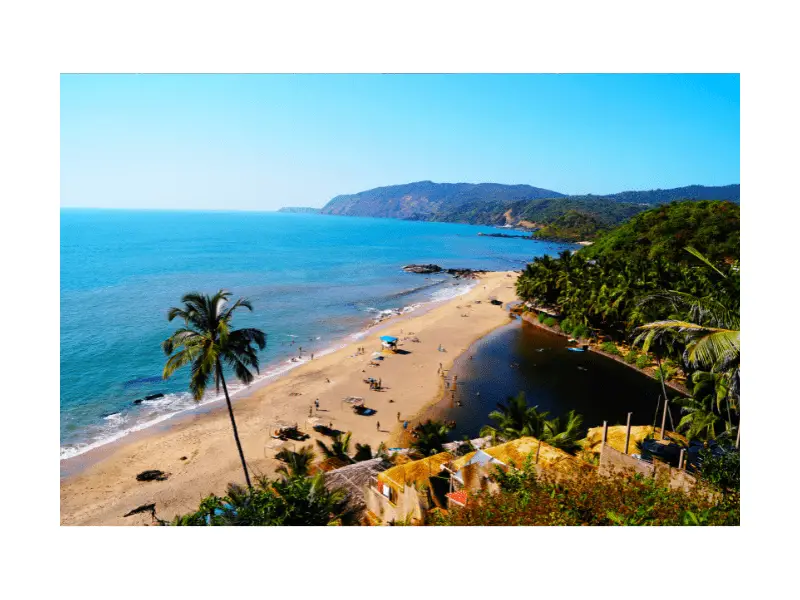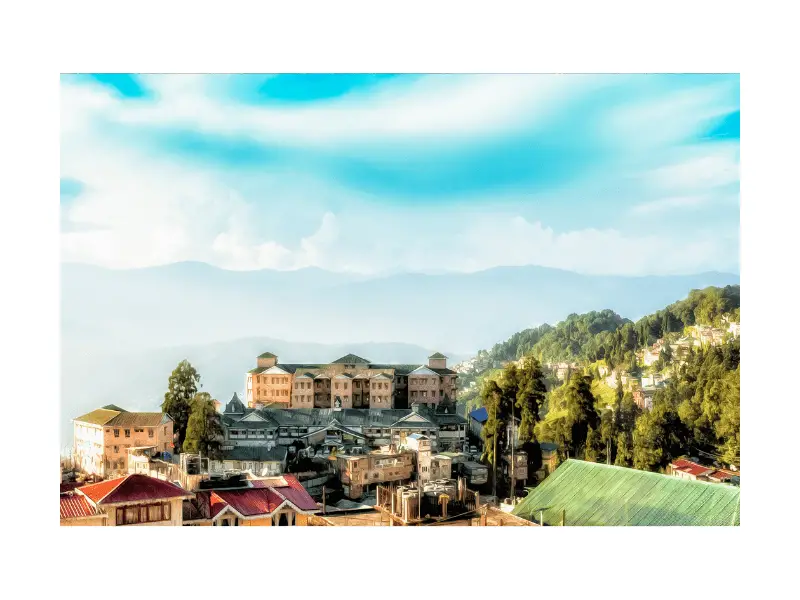India is a country that has been getting a lot of attention in the past few years. It’s not only one of the fastest-growing economies, but it also has some interesting digital nomad opportunities. In this post, we’ll tell you what you need to know about India for digital nomads: visa requirements, internet speed, and best spots!
What Internet Speed should you expect in India
Wifi Network
India has seen amazing growth in the tech department since 2004, from defining broadband as “an always-on Internet connection with a download speed of 256 kbit/s or above” to massively upgrading the entire country with steady and faster wireless Internet.
According to SpeedTest.com, India is ranked 66th out of 177 countries, and internet speed varies greatly between mobile and fixed broadbands.
As of October 2021, mobile broadband is at 13.45Mbps in average download speed and 3.36Mbps in average upload speed, while fixed broadband sits at 46.18Mbps in average download speed and 44.11Mbps in average upload speed.
If you will need to upload a huge amount of data online, WiFi might not be the best choice. It is noteworthy to mention that there are actually more than 200,000 free WiFi hotspots available across the country in cities such as Mumbai, Hyderabad, Kolkata, and more. In short, WiFi is widely available and moderately fast but can run short for some digital nomads.
4G Coverage
Following the steps of the Indian WiFi plan, the 4G network has been expanding over the last decade. As shown by this map from Nperf.com, there is still a clear discrepancy between India’s countryside and its big cities. Nevertheless, Jio Mobile manages to consistently offer 4G in those cities, although their monthly plan is not the cheapest. 4G coverage will be available in some remote places as well.
In general, it’s much better to prioritize buying a SIM card from Jio Mobile or secondly Airtel Mobile, than relying on WiFi hotspots. Be wary of these facts while going from a city to another, connection issues are to be expected.
Always make sure to check the Nperf map before booking a hotel room or Airbnb!
Digital Nomad Visa
Is there a digital nomad Visa available?
Unfortunately for the moment, India does not propose a digital nomad visa that would allow working remotely. Business visas are required only if you intend to work in a local company, although the application is fast since it can be done online.
What Visa digital nomads usually get to visit India?
Without too many surprises, the Tourist visa is generally the most used by remote workers. They can last from 30 days to 5 years but usually, Indian embassies issue valid visas for up to 6 months.
Note that you will be able to stay within the country after 90 days or 180 days depending on your nationality. A rather long stay and an even longer availability for a visa that can be applied online as well.
To apply, you can refer to this official website and you will find all the countries or nationalities which are eligible for an e-visa in the top left tab.
These visas also allow for multiple entries. Many digital nomads see this as an opportunity to spend a week or a month in one of the nearest countries of South East Asia, such as Nepal, Sri Lanka for shorter stays, and Thailand, Vietnam for longer stays and then coming back to India. It can prove to be an excellent way to live the nomad life. A 6-months visa normally costs around $100.
To conclude, even though this visa may not strictly allow you to work remotely from India, it is pretty much the only solution.
What are the best spots in India for digital nomads?
India is a vast country with various landscapes. From the Himalayas to both the Bay of Bengal and the Arabian Sea, the Republic of India has a lot to offer for digital nomads who are in search of a new destination.
As said above in the “Internet speed” section, working online from India’s countryside can be a little troublesome. That’s why I compiled a list of the best spots where you will find consistently good WiFi, great activities to do around, and digital nomad communities.
Mumbai

The second most populated city in India is a perfect match for people who are looking to socialize and enjoy a plethora of evening entertainment. Located in the west of India, Mumbai experiences a tropical climate where the sunny season takes place from Mid-October to early June.
During the day, beach activities are available in various parts of the coast such as the famous Juhu Beach. English is also widely or even primarily used in some parts of the city.
There are also a few cozy coworking spaces like The Mosaic and 91 Spring Board, feel free to check their websites.
Bangalore/Bengaluru

The capital city of Karnataka’s state in the south of India, more commonly known as the “Silicon Valley of India”, is a great spot for tech-savvy nomads. While there are fewer things to do than in Mumbai, you’ll find lots of startups, coworking spaces, and cafés that you can work from with fast WiFi or 4G.
The weather there is especially enjoyable because Bangalore sits at 900m above sea level, which translates into a more moderate tropical savanna climate.
The city is ranked first on NomadList.com.
Goa

If you’re looking to spend summer in India along some of its amazing beaches, Goa might be the spot for you. Popular mostly among Content/Copy and Blog writers, this small western state has all the beach activities you can hope for, from windsurfing to snorkeling.
WiFi is available in small beach huts, hotels, and luxury villas, although it is not always very fast and 4G is only available in some parts of the region.
Darjeeling

Home to the worldly known Darjeeling tea, this city is a good destination for nomads in search of calming scenery. The green mountains of West Bengal and the extensive tea plantations bring a lot of freshness to Darjeeling and therefore you will experience a temperate climate.
WiFi can be found mostly in cafés and the food there is quite amazing as well. There is a project that intends to propose a place for digital nomad retreats, learn more on this website.
Cost of living in India
As you may already know, the cost of living in India is low if compared to many other nations and it is one of its best appeals. Of course, the cost is going to change depending on the city and region, but I’ll try to give you the global estimated price for all the basic necessities.
How cheap accommodations are in India?
Rents are more than affordable across the whole country, even in the city center although the prices can double when compared to a room or apartment in the outskirts of a city.
A one-bedroom apartment in the city center will be around $150 per month while you can expect up to $100 per month. A variety of Airbnbs has their monthly rent at around $20 per night, which is the price to pay for a more cozy environment.
Definitely, one of the least worrying factors when visiting India but it is important to plan in advance if you want to be close to public transportation and places to work from.
How cheap is the food in India?
Even though Indian food is fairly cheap, this is probably going to be the most stressful activity for your wallet since Indian food is just amazing and widely available. You can anticipate the cost of a meal in a low-cost restaurant to be as low as $3. In mid-range restaurants, prices will rise up to $6 for a single three-course meal, therefore around $13 for two.
Transportation costs in India
Finally, let’s take a look at the cost of transportation in India. Traveling by train, bus, and early-booked flight is roughly equivalent to $0.02 per kilometer. Therefore for a distance of 100km, transportation costs around $2. For more urgent flights, the prices can go up to $10.
Trains and local buses, in India, are particularly inexpensive especially if you get yourself a third-class train ticket.
So what about picking India as your next destination?
I was in India when the Covid thing all started. I even had to be evacuated by my embassy. Quite a story I can tell you.
Still, I had the chance to travel the country from Kerala, to Rajasthan, stopping by Benares and it is definitely a trip that I won’t forget.
While the internet was available everywhere I have been, sometimes the speed was not as great as I could have expected, the accommodations were not always cheap. In order to work in good condition, I would recommend a budget of $40 per night. If you like adventure, you’ll be able to pay much less than that though!
If you have the opportunity to go to India, go for it, it will be memorable.
